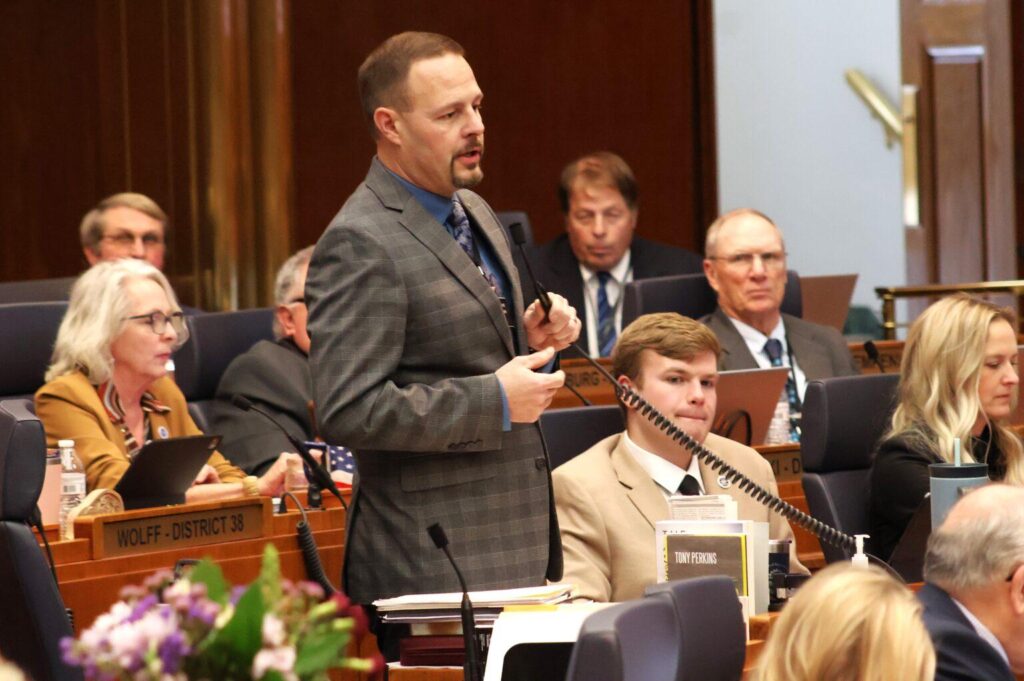In a significant move for state employees and their families, the North Dakota House of Representatives has approved a pivotal change to the state health insurance plan. The decision, which comes amid ongoing discussions about healthcare accessibility and affordability, aims to streamline benefits while addressing the rising costs of health coverage. Supporters of the legislation argue that these adjustments will enhance the quality of care and expand options for state workers, potentially setting a precedent for other states grappling with similar issues. As the bill progresses through the legislative process, stakeholders are keenly watching its implications for countless North Dakotans relying on state-sponsored insurance.
North Dakota House Endorses Revisions to State Health Insurance Plan
The North Dakota House has officially backed a set of revisions to the state’s health insurance plan, a move aimed at enhancing coverage and affordability for its residents. The proposed changes are designed to address long-standing concerns regarding the rising costs of healthcare and improve access to necessary medical services. Key components of the revisions include:
- Increased Coverage Options: The revisions are expected to introduce a broader range of health insurance plans, providing residents with more choices tailored to their individual and family needs.
- Subsidies for Lower-Income Families: A new subsidy program is set to be implemented, designed to assist families struggling to afford health insurance premiums, thereby increasing enrollment rates.
- Telehealth Expansion: The changes will expand telehealth services, enhancing access to healthcare providers, especially in rural regions where medical professionals are scarce.
Furthermore, the revisions promise to streamline bureaucratic processes associated with claims and reimbursements, aiming for a more efficient system that benefits both providers and patients. The House’s endorsement comes following extensive discussions among stakeholders, including healthcare professionals and community leaders. To highlight the significance of these amendments, a comparative analysis of the previous and revised health insurance provisions has been provided in the table below:
| Feature | Previous Plan | Revised Plan |
|---|---|---|
| Coverage Options | Limited choices | Expanded variety |
| Subsidies | Minimal support | Increased financial aid |
| Telehealth Services | Restricted access | Expanded availability |
Key Implications for Coverage and Costs Under the New Structure
The recent approval by the North Dakota House to reform the state health insurance plan has stirred discussions regarding its implications on both coverage options and overall costs for residents. As the state transitions to a new model, stakeholders can expect several significant changes that may affect their healthcare experiences. Key considerations include:
- Increased Flexibility: The new structure may offer enhanced choices of plans, allowing residents to select options that better align with their personal healthcare needs.
- Potential Cost Adjustments: While some may benefit from competitive pricing, others could see shifts in premiums and copayments as the new framework takes effect.
- Impact on Coverage Scope: The type and extent of services covered under the revamped plan could change, leading to both improved and reduced access to certain treatments.
To better illustrate the possible cost implications, the following table provides a snapshot comparison of estimated costs under the previous and new insurance structures:
| Coverage Type | Previous Structure (Monthly Premium) | New Structure (Estimated Monthly Premium) |
|---|---|---|
| Individual Plan | $350 | $375 |
| Family Plan | $850 | $800 |
| Short-term Plan | $200 | $220 |
These changes highlight the importance of carefully evaluating how the revised plan may impact individual financial responsibilities and healthcare access. As more information becomes available, residents will likely be encouraged to reassess their healthcare needs and consider the long-term effects of the new insurance framework.
Recommendations for Ensuring Accessibility and Affordability in Health Care
As North Dakota moves towards improving its state health insurance plan, it is imperative to prioritize both accessibility and affordability for all residents. The following strategies can help bridge the gap between quality health care and cost-effective solutions:
- Expansion of Medicaid: Expanding Medicaid coverage can significantly increase access for low-income individuals, ensuring they receive necessary medical care without financial strain.
- Telehealth Services: Promoting telehealth can reduce barriers for those in rural areas, allowing them to connect with health care providers without the need for extensive travel.
- Sliding Scale Fees: Implementing a sliding scale for provider fees based on income can help ensure that all residents can afford the care they need.
- Insurance Subsidies: Increasing subsidies for low-income families can help reduce out-of-pocket costs for insurance premiums and copayments.
Additionally, fostering community partnerships aimed at enhancing health literacy can empower individuals to navigate the health care system effectively. These collaborative efforts can include:
- Outreach Programs: Establishing outreach initiatives that inform residents about available services and insurance options can increase utilization rates.
- Workshops and Education: Organizing workshops that educate communities about preventive care and healthy living can reduce long-term health costs.
| Strategy | Benefit |
|---|---|
| Medicaid Expansion | Increased coverage for low-income individuals |
| Telehealth Services | Access to care for rural populations |
| Sliding Scale Fees | Affordable care based on income |
| Insurance Subsidies | Reduced financial burden on low-income families |
Closing Remarks
the North Dakota House’s recent approval of changes to the state health insurance plan marks a significant step in the ongoing efforts to improve healthcare accessibility and affordability for state employees and their families. As lawmakers continue to navigate the complexities of healthcare policy, the implications of these changes will be closely monitored by both advocates and opponents. Stakeholders will now await further action from the Senate, where the fate of this proposal will ultimately be decided. As this story develops, North Dakota Monitor will keep you informed on the latest updates and responses from the community and officials alike.
